Home Story The Gatekeeper of Mt. Kenya
The Gatekeeper of Mt. Kenya
Feature type Story
Read time 15 min read
Published Jul 16, 2020
Author Harry Lusted
Photographer Harry Lusted
Fear and rejection on Africa’s second highest mountain
Story and photography | Harry Lusted
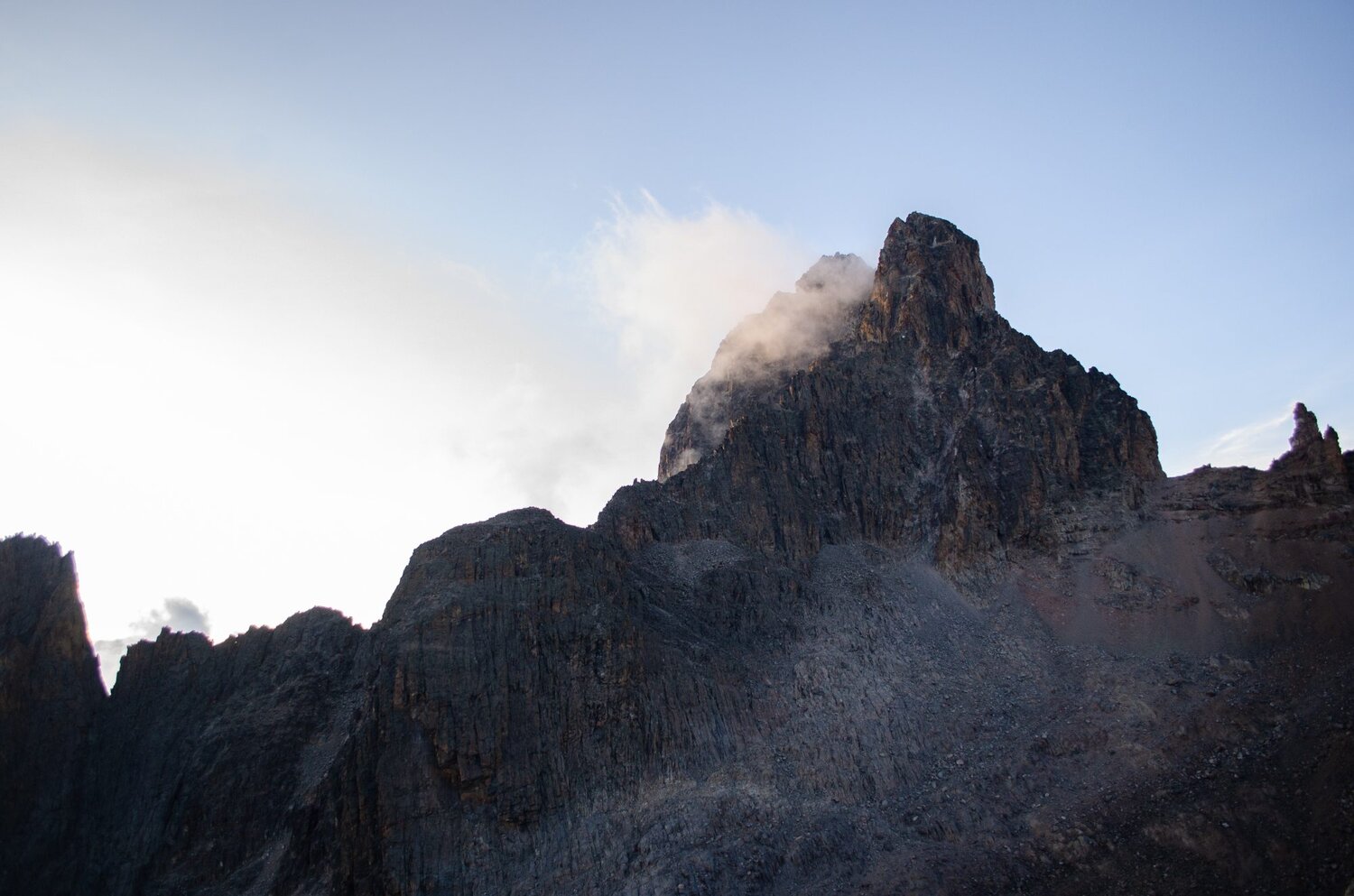
It’s Friday the 13th of March and our party of four – Tom, Louis, our guide Joe, and myself, have spent three days hiking up the Chogoria route on Mount Kenya. We’ve taken our time, bivouacking along the way at Lake Ellis and Lake Michaelson to properly acclimatise and take in the spectacular landscape.
We arrive at a small shelter near to Austrian Hut, the highest hut on the mountain. Generally used exclusively by porters and guides on the mountain, but as we’re the only ones at base camp, Joe assures us it’s OK to set up inside. At 4800 metres in alpine desert, this is great news.
Looming just behind its slightly smaller counterpart Nelion, the tallest peak on Mount Kenya and the second highest peak in Africa, Batian can be seen from the door of the hut. It looks gnarly. Its rugged, sharp ridges continue far into the sky. Joe suggests we go over to the base of Nelion to check out the climb for the summit push the following day, so we empty our bags down to the essentials and repack with climbing gear that we will leave at the base for the next morning.
We go via the glacier, which we’re told is now dead and shouldn’t really be referred to as a glacier anymore. It has retreated so far over the years that it’s barely recognisable to what it once was. Now only remains what was beneath, loose rock, either churned up by the glacier years ago or fallen from the surrounding peaks.
We march over to the unstable terrain that separates us from the base of Nelion. Loose and steep, for almost every step we take, we slide down two. At this altitude, we’re exhausted as we struggle to catch our breath. But it’s broad daylight and we’re giddy with excitement, so we persevere, eventually covering the ground with no problems.
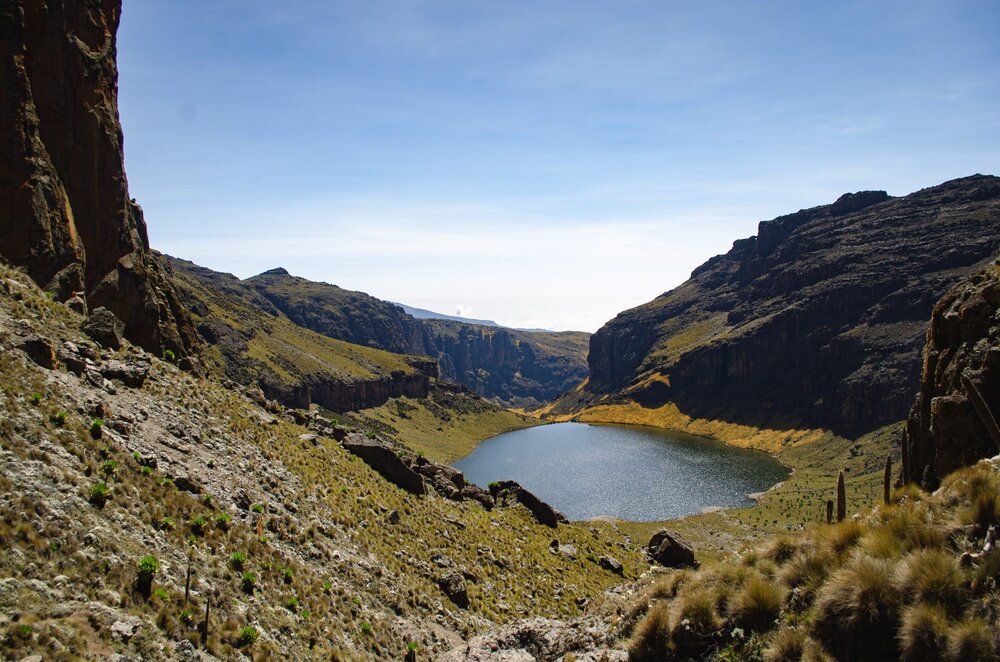
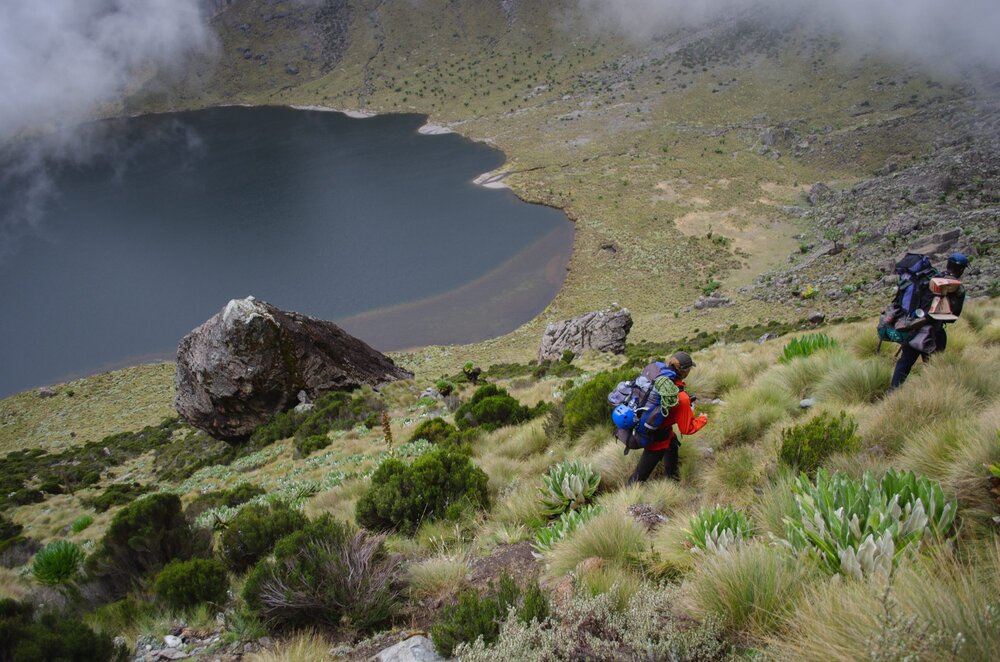
The terrified screams from both him and us are those of sheer terror and helplessness, but almost drowned out by the sound of the boulders crashing into each other.

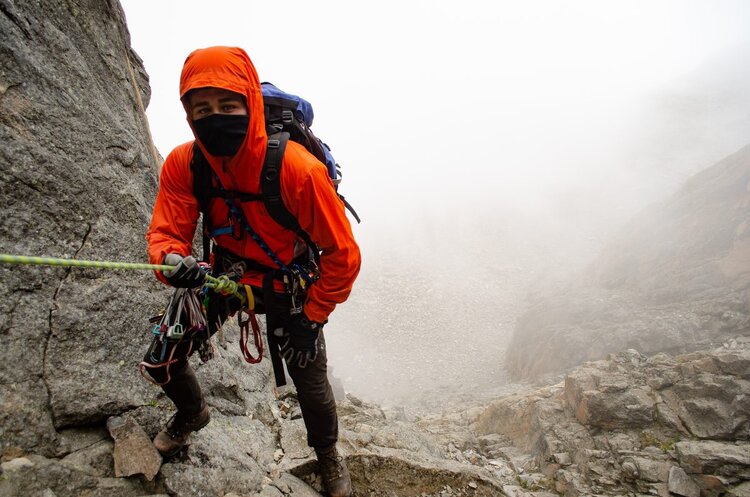
We arrive at the base of Nelion and Joe assures us that this is the start of the Normal Route, the one we’ve been researching over the past few months. We unpack the gear, harness up and try to scope out the route. As we reach the top of what we think is pitch two, Louis leads and takes a right into a steep chimney, which proves a lot more difficult than we thought. I put him on belay but as he’s hidden around a corner. I can only listen out for him whilst I pay out slack on the rope. He reaches a makeshift abseil station, of which there are many on this mountain, old slings and carabiners wrap around larger rocks. We conclude that we should’ve taken a left instead, but that’s OK, we’ll smash it tomorrow morning.
So close to the equator, night sets in quickly on Mount Kenya. As Louis and I make a pretty hasty abseil off the route to regroup with Tom and Joe at the base, we know time has gotten away from us as it’s starting to get dark. We stash the gear under a few stones at the base and ready ourselves to cross back over the sea of loose rock to the hut.
With the first few metres down the slope instant fear grips us all. We quickly realise that because we were so caught up in the excitement of climbing, we’ve left it too late to make a safe return in the light of day. We switch on the head torches we have between us and one by one take very reluctant steps downwards.
The underlying tension grows as we steadily descend the steep pile of scree to reach the glacier. With each step, a sigh of relief as the ground barely holds its place. About halfway down the slope, Joe takes an unfortunate step and the rocks beneath him start to give way. Almost riding it at first, he remains upright. But as the emerging rockslide gains momentum, larger rocks start to give way beneath and above him as he tries to step off.
We can only watch as he tumbles sideways down the mountain amongst the boulders, some the size of space hoppers, for what seems like forever. The terrified screams from both him and us are those of sheer terror and helplessness, almost drowned out by the sound of the boulders crashing into each other. The rockslide finally comes to a halt but the screams persist. We run down the slope guided by our head torches, taking extra care to not dislodge more rocks. We find him on his back and in shock. His head is just below two huge boulders – if they were to roll just once more, we’d be faced by a very different scenario.
We’re just below 5000m as Joe exclaims his leg is broken. There’s not a soul around, we have no water and zero phone signal. Panic sets in as the cold alpine night rapidly descends on us.
As we release his foot from the boulders to examine the extent of the damage from the rocks, we notice the lace buckles on his boots have been flattened by the impact, thus trapping the laces. Whilst clearly injured, the leg is not obviously broken and we decide it can be tentatively walked on. Louis and I pick him up off the rocks and we try to formulate a plan.
With the dark night taking over, we count our lighting situation – two phone lights and two head torches. As Joe pleads for water, we decide that while the other two rush back to the hut as quickly as possible to fetch water, the best option is for me to stay with him. We’ll slowly make our way back to the hut, the other side of what remains of the rockslide territory, a glacier and further uneven rock.
Joe and I try to relax and catch our breath in the thin air as we watch Louis and Tom’s single head torch drift off into the blackness.
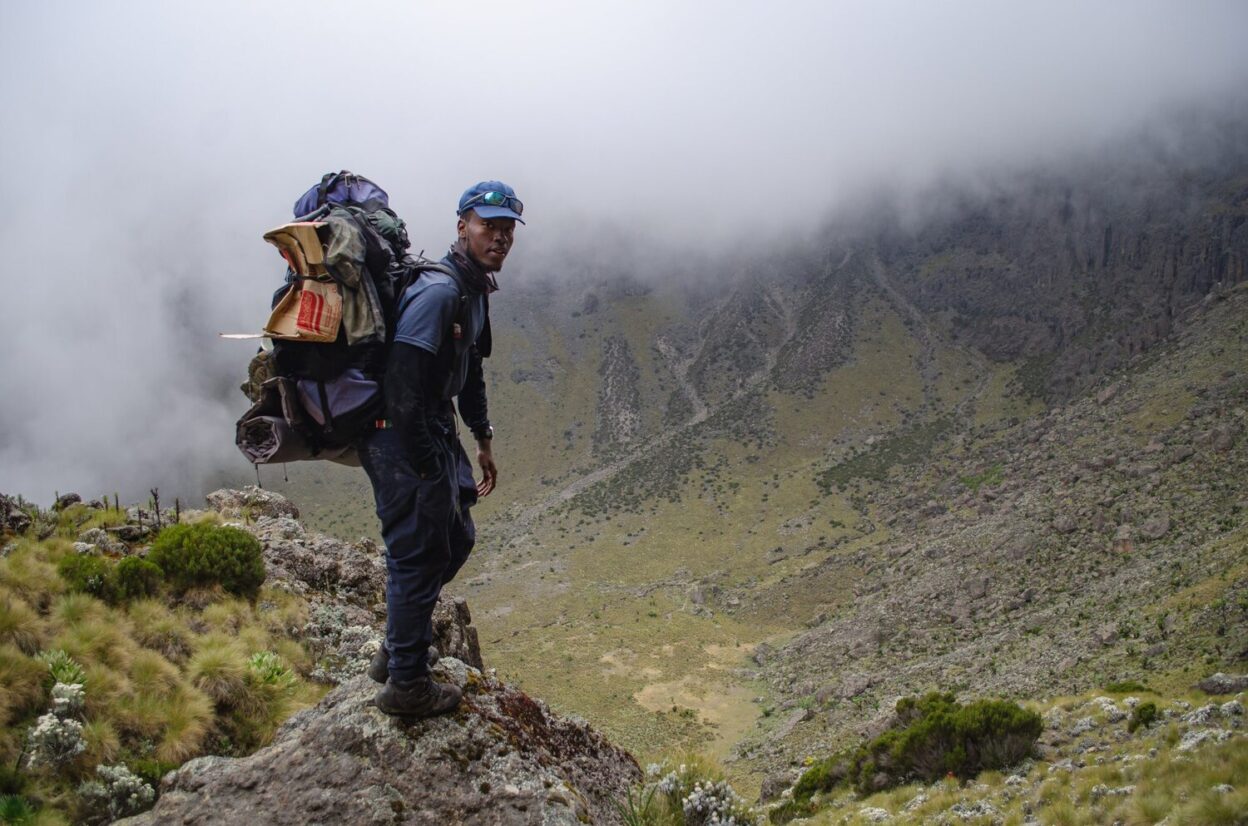
Joe brings his right shoulder to my attention. Moving it is near impossible. It’s dislocated at the very least, but I try to keep the mood positive. He’s in shock and we have a long journey ahead of us. As we start to move, his shoulder pain really kicks in. I remove my fleece and tie it snug over his right arm, across his torso and under the left, locking the shoulder in place.
I notice in the distance the faint light of a head torch, shining around a steep rock face. ‘They need to go left….. and up’ Joe tells me softly with a deep breath. I shout over to them repeating the instruction. They shout back. They must’ve taken a wrong turn. In the dark, without a guide, the path is proving to be impossible to navigate efficiently.
They pursue upwards, we take another deep breath and begin to move again.
I lead from the front, testing the rocks for stability with my phone torch in one hand and him in the other. If I was unsure on the stability of any of the rocks, I threw them down the mountain, stamping out a mini platform we could be sure would hold our weight. This step-by-step guide over what feels like a minefield continues for about an hour. Now with the initial adrenaline wearing off, deep in pain and shock, Joe is desperate for water. I reassure him again. As I look up, expecting to see the distant head torch, I see nothing.
We move forward to the more steady ground lying before the steep incline to the glacier. This marks the halfway point back to the hut.
One wrong step sees Joe and the surrounding rocks start to slide again. We’re both exhausted holding on to each others wrists desperately, my left foot locked onto the sturdiest rock available. He screams in pain and I shout in fear. The one thing holding us both up could slip at any second. I drag him up on his side to share my perch and sit him down to rest.
Searching desperately for a beacon from the distant head torch, I shout into the abyss, but I hear nothing back. Instead I find Tom’s gloves, laying on the floor next to the edge of a rock face.
An overwhelming feeling of complete loneliness washes over me, as I fear the worst – ‘they must’ve been climbing a face in a shortcut attempt and fallen off an edge. I’m up here alone with an injured guide, and the temperature is rapidly dropping below zero.’ Thoughts of the worst rush through my head as I tell Joe I’m just going to check out the path ahead. I run over to the edge of the precipice and use my phone light to shine into the deep gullies, expecting to see my friends in a heap at the bottom. I see nothing but darkness so I call out again. There’s no reply. I return to Joe, holding the fear that both my friends have died hidden away. I give him my gloves as his temperature is starting to drop and we struggle getting them onto his fairly debilitated right hand.
Joe is in serious need of water now, he points out that he can hear a trickle from under the rocks. I start to dig immediately, throwing the larger rocks over my shoulder and going straight back in. About a metre down I find ice, breaking some of it off with a smaller rock and hand it to Joe. Frozen into small balls, they’re similar to the size of BB pellets. Joe chomps them down regardless of the rock fragments they’re speckled with. It’s clear that this isn’t going to do anything to ease his dehydration anytime soon. I remember the protein bar I have stashed away in my pocket. I carefully tear off the top of the wrapper and discard the bar itself. Filling it with the loose ice, I lift my top and hold it to my chest in the hope to melt it as quickly as possible. There’s no more than a shot’s worth of water, but it’s drinkable nonetheless.
We move up the steep incline of loose rock when Joe recognises the path. We assure each other that we’re going the right way and we head towards the glacier – a dull white glow in the pitch black.
As we reach the glacier I punch through the surface ice of a puddle, scooping up the water to feed directly to Joe. We get a good drink and a rest before I try shouting again into the night. Again there’s no reply. By this point my fear is hard to hide, there’s no way getting water from the hut would take this long – something awful must have happened.
About two and a half hours into the ordeal, I see a flicker of light towards the direction of the hut. My eyes tear up as I realise my friends aren’t lying helplessly at the bottom of a gully. They come to meet Joe and I as we hobble our way back towards the hut, by now I’m underneath Joe’s left arm, keeping him from hunching over from the immense pain he’s in.
Tom rushes over and takes over holding Joe up as I start to bark at them. ‘What were your fucking gloves doing down there?! I thought you’d both died! Where the fuck have you been?!’ They explain that they had gotten lost in the dark and the gloves must’ve just fallen out of a pocket. I apologise, putting the outburst down to fear. We make it back to the hut three hours after the rockslide.
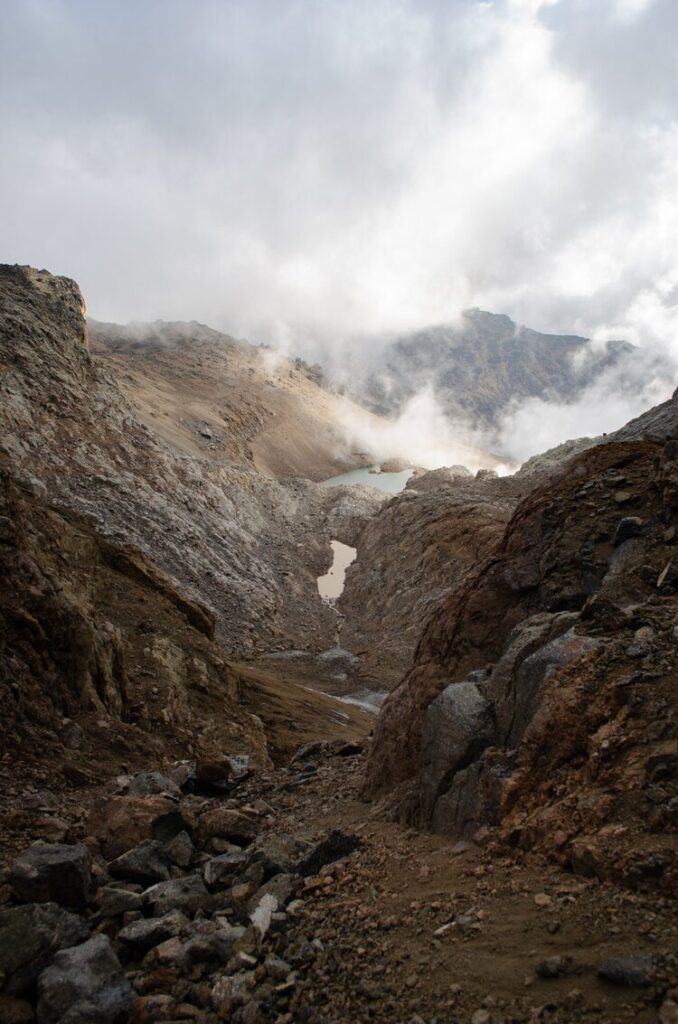
I use my phone light to shine into the deep gullies, expecting to see my friends in a heap at the bottom. I see nothing but darkness so I call out again. There’s no reply

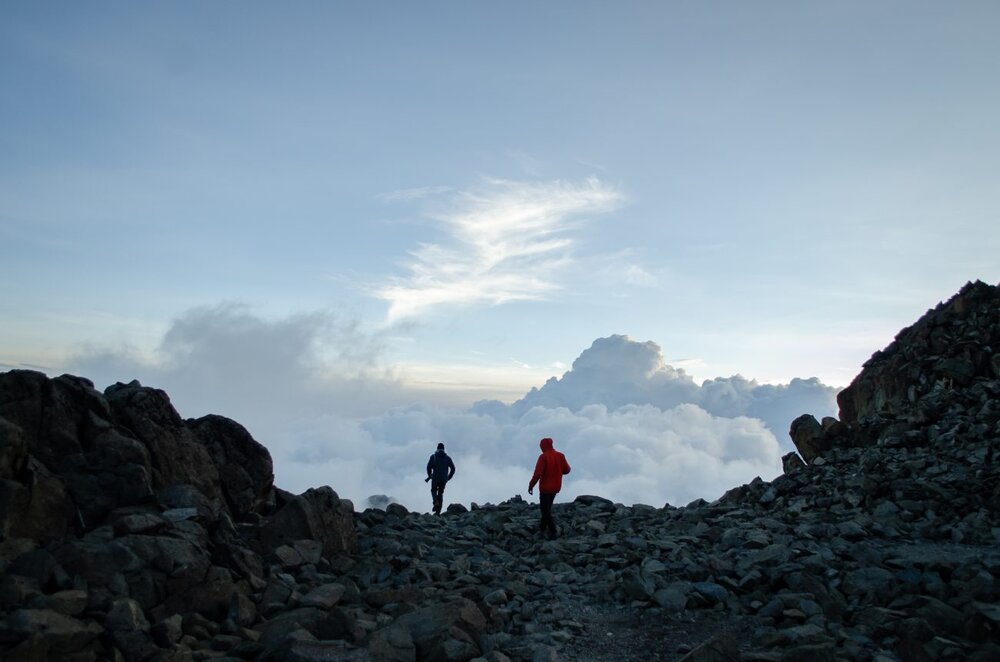
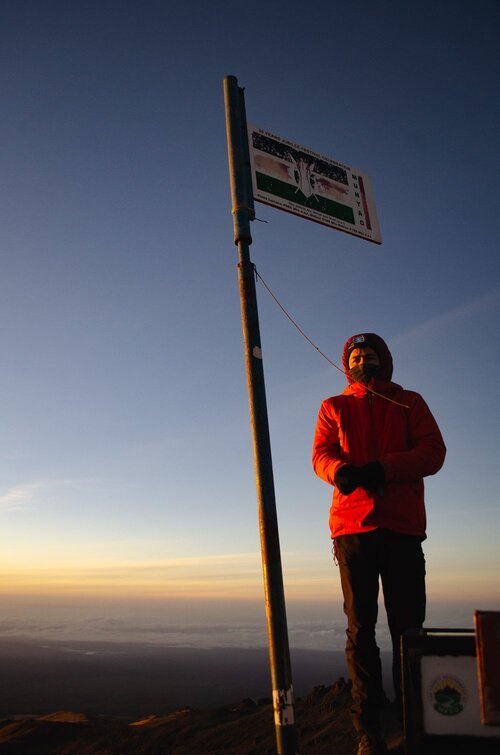
We clear a space for Joe in the hut and create a backrest out of anything we can get our hands on and a saucepan of water for tea goes straight on the heat. Calling a helicopter out at this time in the night is impossible so we can only wait until morning. Joe is unable to lie on his back because of the pain, his shoulder still drooping far down from where it should be. We wrestle him into his sleeping bag, replacing his gloves with more heavy duty ones and throw more layers on top of him.
Louis makes sweet, black tea for us all and we force down the bland combination of couscous, apricots and nuts, and try to get some rest. Joe sits upright as it’s more comfortable but the painkillers to little to ease his pain. We encase ourselves into our sleeping bags sporting our full outfits, hats and neck gaiters, stashing heat packs into our pockets where we can. The wind blows heavily on our little hut but exhausted, I fall asleep almost instantly.
Early the following morning, I wake up to noise of the hut door being pulled ajar. Joe still hadn’t slept so at sunrise he made his way to a nearby location that the guides and porters use as a signal hotspot to make a phone call to his father, a legend amongst the Kenyan mountaineering community. A team of 20 men with a stretcher are instantly deployed to the mountain to take him to safety. Accompanying them is James, our replacement guide who will take us to Lenana Peak the next morning.
Tom, Louis, James and I reunite with Joe the next day at Old Moses Camp, which lies at the bottom of the other side of the mountain. He looks healthy and happy in his new sling despite recently having his shoulder put back into place after 20 hours of dislocation. We leave Mount Kenya National Park together and make a beeline for a local restaurant with chapatis, beans and White Cap beer on our minds. Joe expresses his gratitude towards us but we’re just happy to have everyone together again in one piece.
According to the tribal legends of the Kamba and Kikiuya, the omnipotent god Ngai created Mt. Kenya as his dwelling place on Earth from which to survey his creation and his people. It’s he who chooses who can climb the mountain as well as who cannot. I guess this just wasn’t our time.
Don’t miss a single adventure
Sign up to our free newsletter and get a weekly BASE hit to your inbox
You might also like
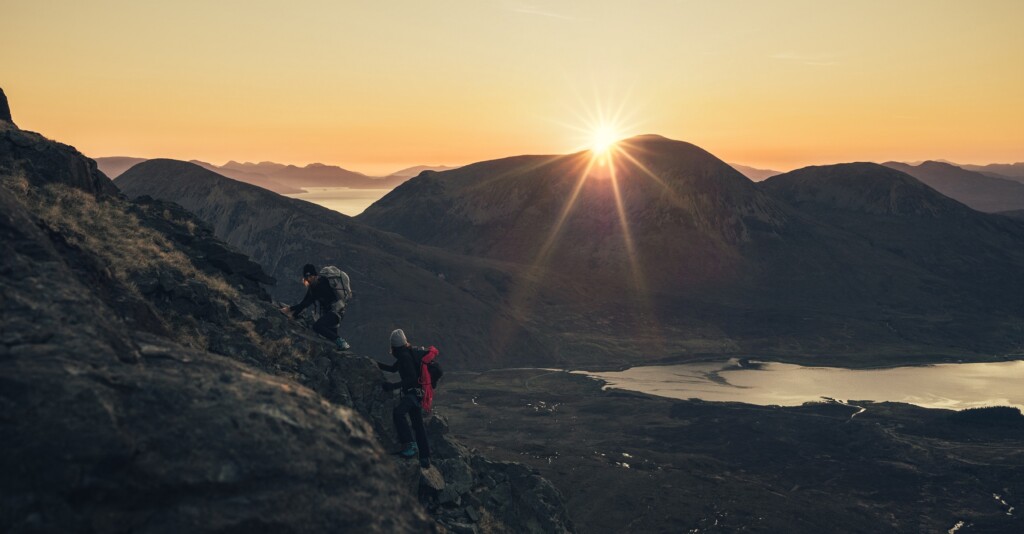
Story • Kieran Creevy • Jun 16, 2023
Scrambling Before Scran on Scotland’s Misty Isle
Sun-drenched ridge lines with expedition chef Kieran Creevy on the Isle of Skye
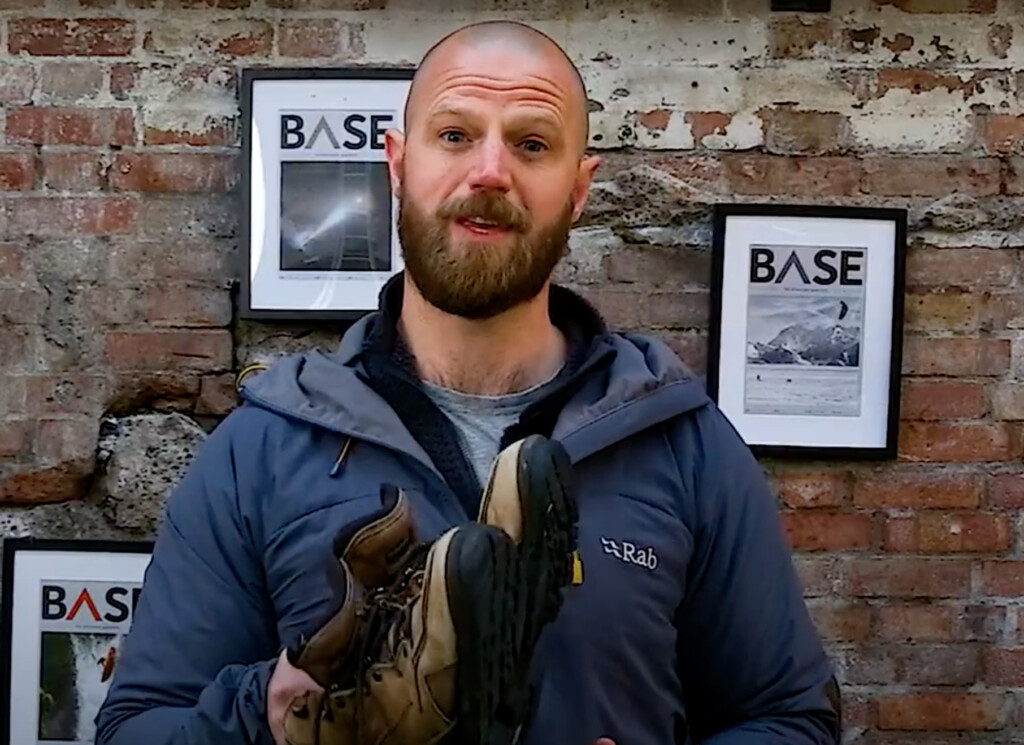
Video • BASE editorial team • Jun 02, 2023
How To Clean And Care For Hiking Boots
Our top five tips to give your hiking boots a 'glow up'
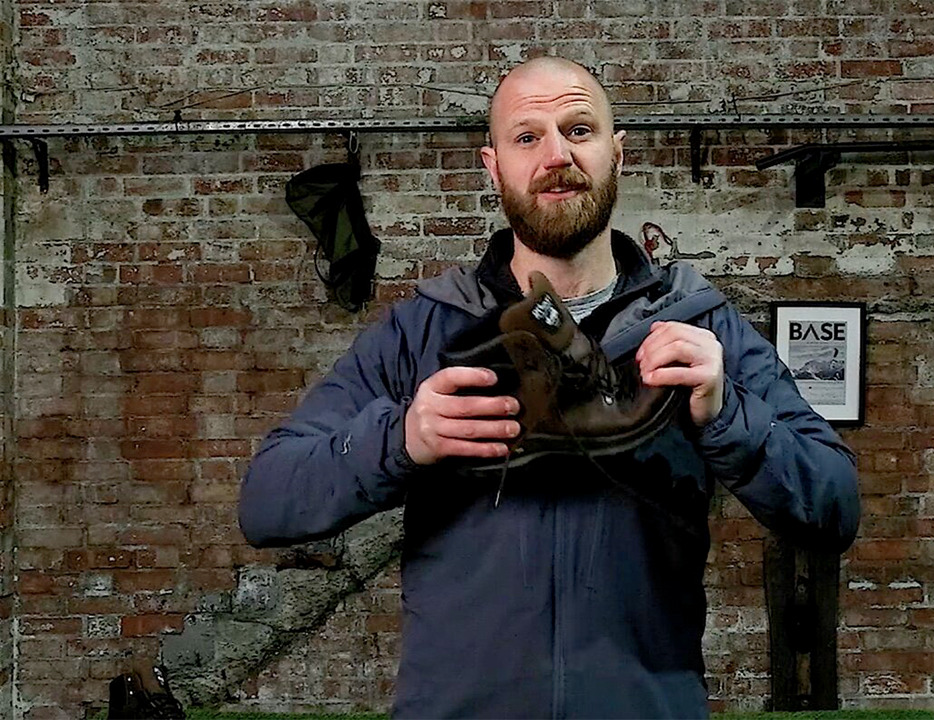
Video • BASE editorial team • Mar 30, 2023
How To Break In Leather Walking Boots
5 fast hacks for breaking in your boots, beating the blisters and reducing the ankle rub
